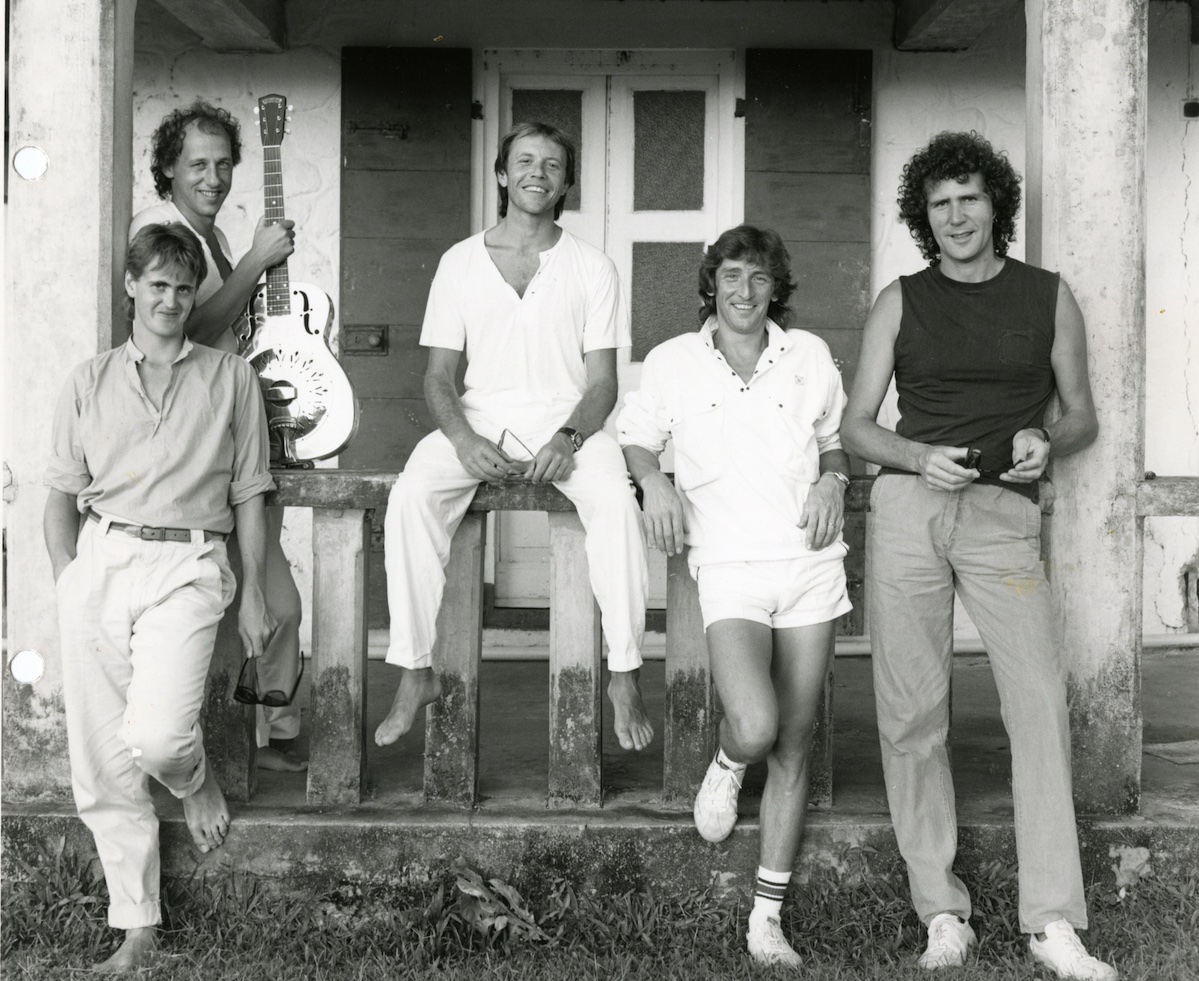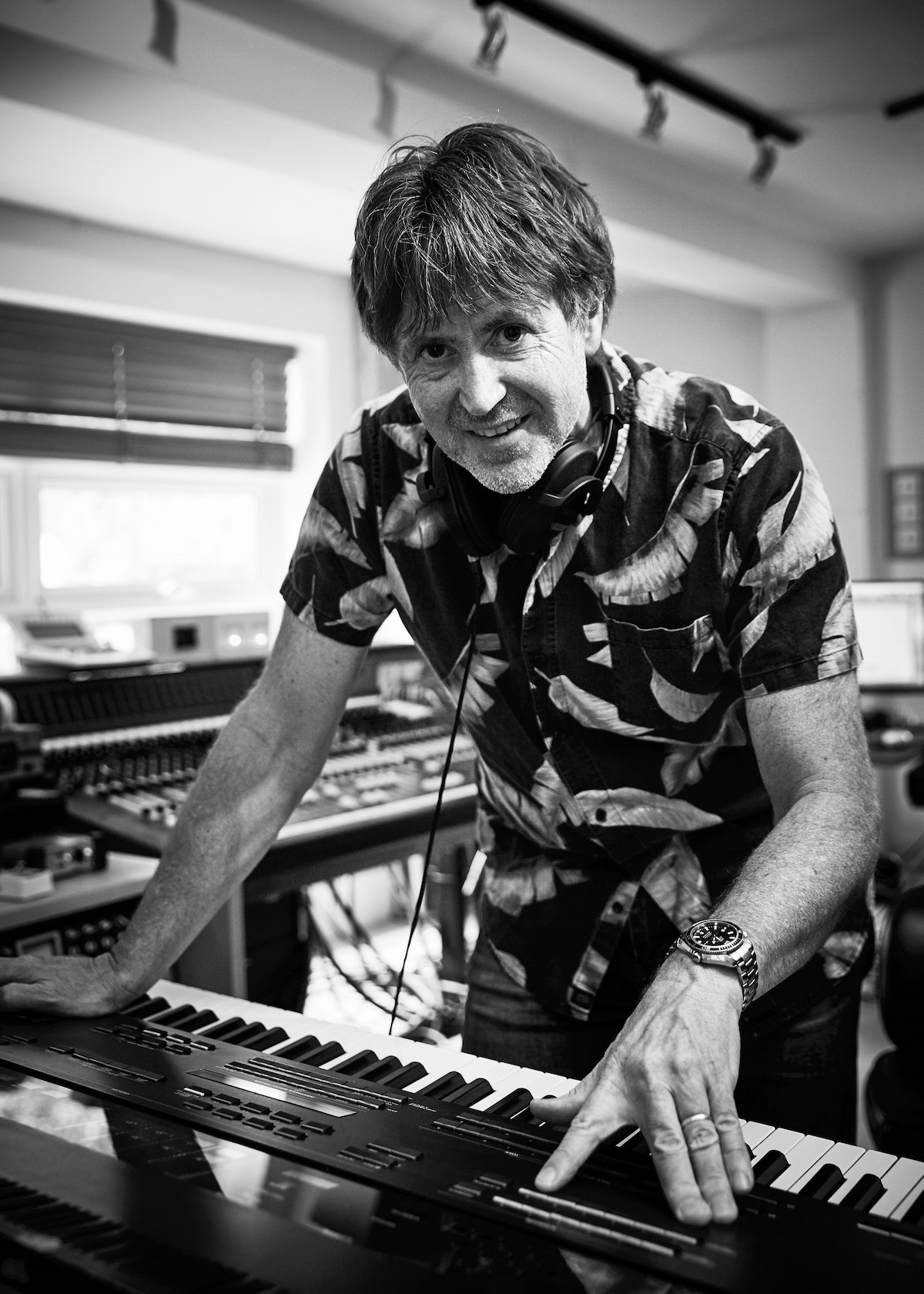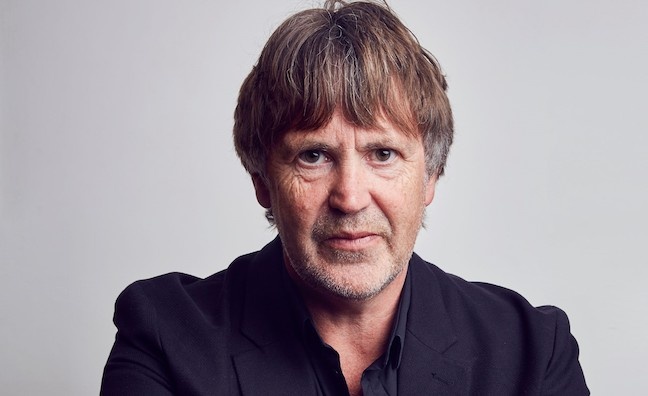PROMOTIONAL FEATURE
Dire Straits’ Money For Nothing is among the latest landmark releases to be remastered for Dolby Atmos this year.
The British group’s 1988 compilation is among their best-sellers with more than 1.2 million sales certified by the BPI. The new edition has been remastered by mastering engineer Bob Ludwig. The new Atmos mix of the album is available on streaming platforms here.
The title track, which was co-written by Sting, went Top 5 in 1985 and in the UK’s modern chart era it has more than 750,000 Official Charts Company sales based on streaming and downloads.
In an interview for Dolby, former keyboardist Guy Fletcher has spoken about the process of remastering the Money For Nothing album in band leader, songwriter and longtime collaborator Mark Knopfler’s British Grove Studios in Chiswick, west London, which has recently upgraded to Atmos.
Dolby Atmos Music allows creators to place discrete audio elements or objects in a three-dimensional sound field, which is not possible in stereo. In the studio, Atmos also enables mixing specifically for headphone listening.
Ultimately, the immersive audio format gives artists the control to make music that fulfils their vision. In the case of Money For Nothing, that enabled the members of Dire Straits to go back to the originals and refine them with immersive audio in a way that technology did not allow four decades ago.
Brothers In Arms, the studio album which first featured Money For Nothing, has staggering UK sales of more than 4.2 million and is certified 14 times platinum. They’re a band whose songs are beloved by fans around the world.
Here, Guy Fletcher opens up about the responsibility that comes with reimagining classic songs, the ease of deploying Dolby Atmos for their catalogue and his artistic vision for immersive audio…
Tell us a bit about the Money For Nothing Album, how did it come about originally in 1988?
“Well, as you know, it’s a compilation album. At the time I was pretty much unaware of its release because it was something the label put out after Brothers In Arms. I guess at the time, they didn’t realise when the next album was coming in. So, it was just an interim album that the label deemed necessary. It’s really that simple as there weren’t any big discussions with the band or anything, it was just the label sharing the greatest hits.”
As it’s a ‘greatest hits’, with songs spanning 1977-1988, you would have been going back to the original master tapes, some of which are 45 years old. What was the process like?
“It was very interesting. I can tell you it’s one of the most challenging things I’ve ever been involved with. Universal has a really good archiving system and there is great connectivity between the two labels, because of course Warner is Mark’s label in America, so a lot of masters are actually in America.
“Despite that, you never really know what’s in the box until you open it up and put it on. Especially as things going back that far aren’t always labelled perfectly, so some of the masters were quite difficult to find. Particularly the album Making Movies, because that was the sort of era when there were lots of safety copies. Finding the latest version of some of those songs was immensely challenging and the only way to do it was to put them on because the labelling wasn’t credible.
“Of course, you’d never have known that unless you had to go through this process in terms of literally going back to the basic, original recordings. But we got there, and it felt very gratifying to be able to do it and hear everything and align it. So yeah, we got there in the end and it’s great.”
Mark Knopfler’s British Grove Studios is an incredible, world-leading facility, with studio 2 particularly being a room that you’ve spent a lot of time in. How have you and the studio staff found the upgrade to Dolby Atmos?
“Oh, it’s great. It was obviously quite a challenge, as it is in any room, especially a room that was built before Dolby Atmos was around. But they’ve done a fantastic job. It’s a phenomenal Dolby Atmos room, with plenty of headroom in terms of power. So yeah, we’re all very happy with it. It was quite a technical process but it’s great, well worth it.”
You’ve done various Dire Straits projects in surround sound formats over the years. How does Dolby Atmos compare to those experiences?
“The only one I was really involved with was the 5.1 Brothers in Arms that [producer and engineer] Chuck Ainlay did. I’ve got to say Dolby Atmos just blows it away. The immersive experience of Atmos is so far in advance of standard 5.1. At the time, 5.1 was great, but this is a whole different level of immersion. Having access to those 5.1 surround mixes that Chuck did were fantastic, but again, compared to this they were very limited. Atmos really opens it up.”
Have you found working in Dolby Atmos easy? How long did it take you to feel confident enough to dive into the album?
“I found it easy straight away. Once I grasped the technical side of things, it just seemed to be a really creative environment to be able to throw things around. Obviously, there is the temptation to go a little bit crazy at first. You have to play around with that first and establish your boundaries, then work within them. But I found it really enjoyable from the word go.”
Dolby’s binaural metadata settings allow you to build out bespoke immersion for headphone listening. How did you find this new way of working?
“To be honest, that’s taken a bit of time to really understand how the immersion works, how to get the settings right, and what to put where. It’s quite subtle compared to being in the room with the full speaker set-up, but it’s an incredibly useful place to start these mixes because I’ll do a lot of it at home on the binaural and get to grips with that. I do that first and then when I bring it into British Grove, it opens up beautifully and translates really well. I have to say it’s great once you get the hang of it.”
This is an album where every song is a classic. Millions of people have grown up with these recordings. How do you approach mixing in Atmos when you know there’s such intense familiarity with the original stereo mixes?
“This is a big challenge. I think the answer to that is just balance, because you’ve got to retain the original mix as these songs are hugely important to people. But at the same time, you want to explore the possibilities of object placement. The most obvious thing that happens is you get to hear parts that you knew were there, but you couldn’t really hear them in detail. You can hear particular things like bass guitar – you can really hear the subtleties of the part. When you’ve got songs which are well arranged, which most of these are because they’re pretty much classic, you can really enjoy the experience. I’ve had really good feedback from fans who are very happy to be able to hear these songs in a new way.”
 Dire Straits in the 1980s (Credit: Deborah Feingold)
Dire Straits in the 1980s (Credit: Deborah Feingold)
The album has great musical variety - upbeat rock ’n’ roll numbers like Walk Of Life and Twisting By The Pool on one hand, cinematic and beautiful tracks like Private Investigations and Brothers In Arms on the other. Can you give us examples of how working in Dolby Atmos enabled you to re-imagine these songs?
“I think Private Investigations is the best example because it's such a visual cinematic experience. I felt that when you’re working in Dolby Atmos to recreate these things, you’re always comparing to stereo. I always found that on that track the stereo felt limited. There wasn’t enough space available at the time to realise Mark’s concept of Private Investigations. In fact, when Mark came in to listen to it, he wanted to play with it even more. On that song in particular, we pulled away from the original and really enjoyed it. It was a really enjoyable experience.”
These versions of Telegraph Road and Portobello Belle are live recordings. How different is it to mix live tracks vs studio recordings?
“It’s not that different really. Of course, it depends on the quality of the recording. As always, some of the live stuff is a little more challenging simply because of the way it was recorded. But I didn’t find it too different. Obviously, you’ve got the audience mics which you can just sit in the appropriate places and use the rear speakers to make it feel like you’re there. And it works! It lends itself to live recordings, certainly just as much as studio.”
Do you feel you’ll be approaching new recordings and compositions differently now you’re an Atmos user?
“I don’t think it’s going to change the way I think about making music, but it’s always in the back of your mind that this is going to be fun in Dolby Atmos. We are working on Mark’s new album now and I look forward to doing the Atmos, I really do.”

What advice would you give to musicians, producers and engineers who are thinking about working in Dolby Atmos for the first time?
“Stick to the guidelines. It’s very easy to go crazy, particularly with level – you’ve got to be careful. I’ve had to rein it in! It’s very easy to go wrong and go mad and it just doesn’t work. So, there are definite guidelines that you need to adhere to – they’re there for a reason! Don’t go too mad with things that are important to the track, like the bass and the vocal. As long as you retain focus on the important elements, you can have fun with everything else and get a lovely balance. A lovely dynamic between them.”
Dire Straits albums, particularly Brothers In Arms, were at the forefront of the format shift to CD in the 80s. We’re here at the start of a new revolution in listening, does that excite you?
“It does excite me, and it also frustrates me as there are many people who can’t experience this the way we are creating it, so I wish there were more systems freely available – I know that will change over time. In fact, I’ve been on at my brother, who works for a leading audio company, to get on it and try and develop something that’s more affordable and incorporates more speakers. You know, I’d love to see remote ceiling speakers becoming more readily available and even DIY Atmos. I’d love to see that happen – and it’s all moving forward with soundbar technology. But having speakers to experience this is the way I'd like to see it go.”











